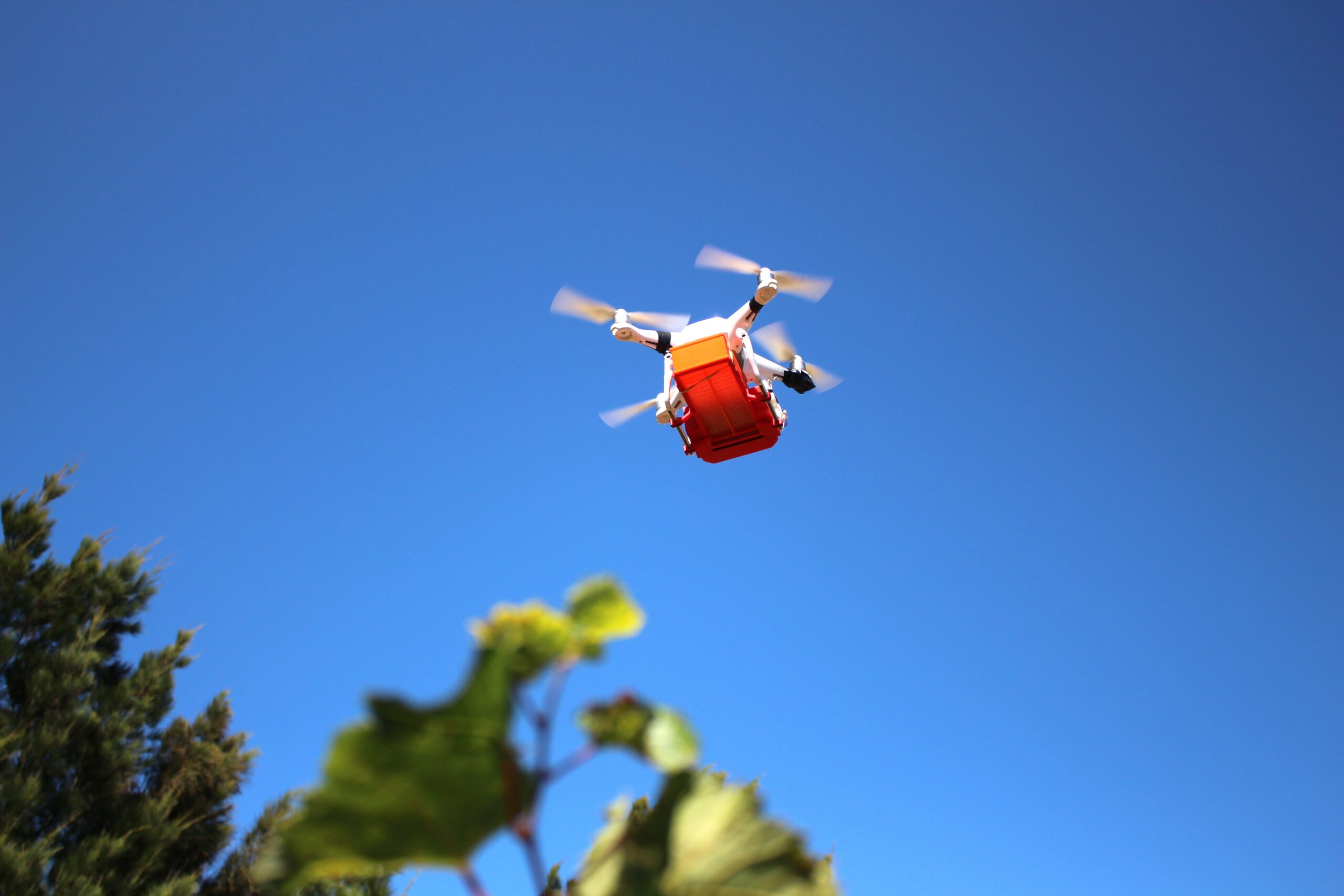Gadget of the Week
Gadget of the Week: Drones vs Bugs
At a wine estate in Somerset West, high-tech drones are as important as high-grade grapes, writes ARTHUR GOLDSTUCK.
What is it?
About a decade ago, the skies above commercial orchards in the Western Cape began buzzing with the sounds of drones. Until then, these were seen as either toys or cool ways to shoot aerial photos and videos. Now, suddenly, they defined cutting edge agriculture.
A Cape Town startup called Aerobotics began using drones equipped with high-resolution cameras, combining the footage with satellite photography and artificial intelligence (AI) tools to provide instant analytics to tree-crop farmers.
As I mention in my book, The Hitchhiker’s Guide to AI, it was one of the early success stories of AI, machine learning and drone technology. AWS used them as a case study on its website: “Monitoring every tree for pests and diseases on a 50-hectare farm would previously take a farmer an entire day. Aerobotics has reduced this to 20 minutes with drone technology.”
In 2019, Aerobotics raised R29-million investment from local venture capital company Paper Plane Ventures, and a year later Naspers injected a further R100-million, making it one of Africa’s big start-up winners of the past decade.
Now the company has taken its technology to the winelands, adding a dose of ancient natural remedies to its high-tech solution.
At Vergelegen wine estate in Somerset West, which is known for its pioneering environmental initiatives, drone-delivered beneficial insects are being used to control pests in its vineyards.
The 324-year-old estate is working with a new South African venture, SkyBugs, a collaboration between Aerobotics and FieldBUGS. The latter supplies the predatory bugs, and Aerobotics collaborates with a network of drone pilots to disperse the insects accurately.
According to Vergelegen, the first SkyBugs drone dispersal took place there in October last year and a total of five such dispersals should have taken place by the end of this month (March 2024), covering 130 hectares.

Colin Geel, drone pilot for Aerobotics, checks the flight path on the controller.
The insect release involves flying a drone 30 metres above a vineyard block. The drone uses a motor-driven mechanism equipped with a cartridge and a drawn-out plastic film to release the insects onto the vines. Each flight covers up to 20 hectares, after which the drone is landed, and a new battery and cartridge of insects are inserted.
Here is where it gets really technical.
FieldBUGS has 15 insect types in its arsenal, and sources them from “insectaries” in farflung rural towns like Piketberg and Tzaneen.
Ruan Erasmus, FieldBUGS technical support specialist, says the insects are dispersed while in the pupa life stage between immature and mature insect, and hatch after several days, depending on the weather.
“The target of these tiny heroes is mealybugs, which spread a disease known as leaf roll virus,” he says. “This disease is much more apparent in red wine cultivars, but also affects white wine cultivars. Leaf roll virus diminishes the quality and volume of the harvest and eventually the vines become uneconomical and must be uprooted.”
Vergelegen says it uses predatory wasps (Anagyrus Vladimiri and Coccidoxenoides Perminutus) and ladybug beetles (Cryptolaemus Montrouzieri) which are indigenous to South Africa. In the first stage, predatory wasps are attracted by a pheromone released by female mealybugs. This is followed by the selective distribution of ladybugs, which can eat 100 to 200 mealybugs daily.
Vergelegen viticulturist Rudolf Kriel is delighted with the results, but points out that it is the latest in a long line of innovations at the farm.
“From a grapevine leaf roll virus point of view, it is exceptional to have vineyards of this age (20-25 years) that are essentially virus-free,” he says. “Vergelegen has been the pioneer in many ways for addressing leaf roll in the South African wine industry, and has been implementing these control strategies since these blocks were established.”
For the past 25 years, the Vergelegen team has also worked closely with Professor Gerhard Pietersen of the Agricultural Research Council’s Plant Protection Research Institute at the University of Pretoria. He wanted to demonstrate the scientific and commercial value to the wine industry of managing leaf roll virus, and Vergelegen was a willing partner.
How much does it cost?
Farmers considering drone dispersal of insects should cover a minimum of 50 hectares. Costs range from R650-R1500/hectare, which includes scouting, insect release, technical support and reporting. For more information, visit https://page.aerobotics.com/skybugs
Why does it matter?
According to Ruan Erasmus, South African farmers are advanced in harnessing data to assess and manage risk, and there is growing interest in biological control of pests, especially in the Western Cape, from which 80-85% of fruit is exported. Farmers want to improve their yields, and avoid chemical residue on fruit, to meet strict European and Fairtrade environmental standards.
Beneficial insects not only suit vineyards, but can also be used by producers of citrus, dates, apples, macadamias, avocados, pears, blueberries, cannabis, strawberries and various vegetable crops.
Matt Davis, head of mapping operations at Aerobotics, says: “Vergelegen is one of our largest clients and it’s been exciting to work with them, in a programme that has provided good proof of concept for using this method of drone-delivered beneficial insects. The estate has been most receptive to using technology in their quest for pest-free vineyards using natural methods.”
What are the biggest negatives?
- Not aimed at small farms.
- Still in early stages of proof of concept.
What are the biggest positives?
- Cost-effective
- All-inclusive, end-to-end solution.
- Meets strict environmental standards.
* Arthur Goldstuck is founder of World Wide Worx, editor-in-chief of Gadget.co.za. Follow him on Twitter and Instagram on @art2gee.

















